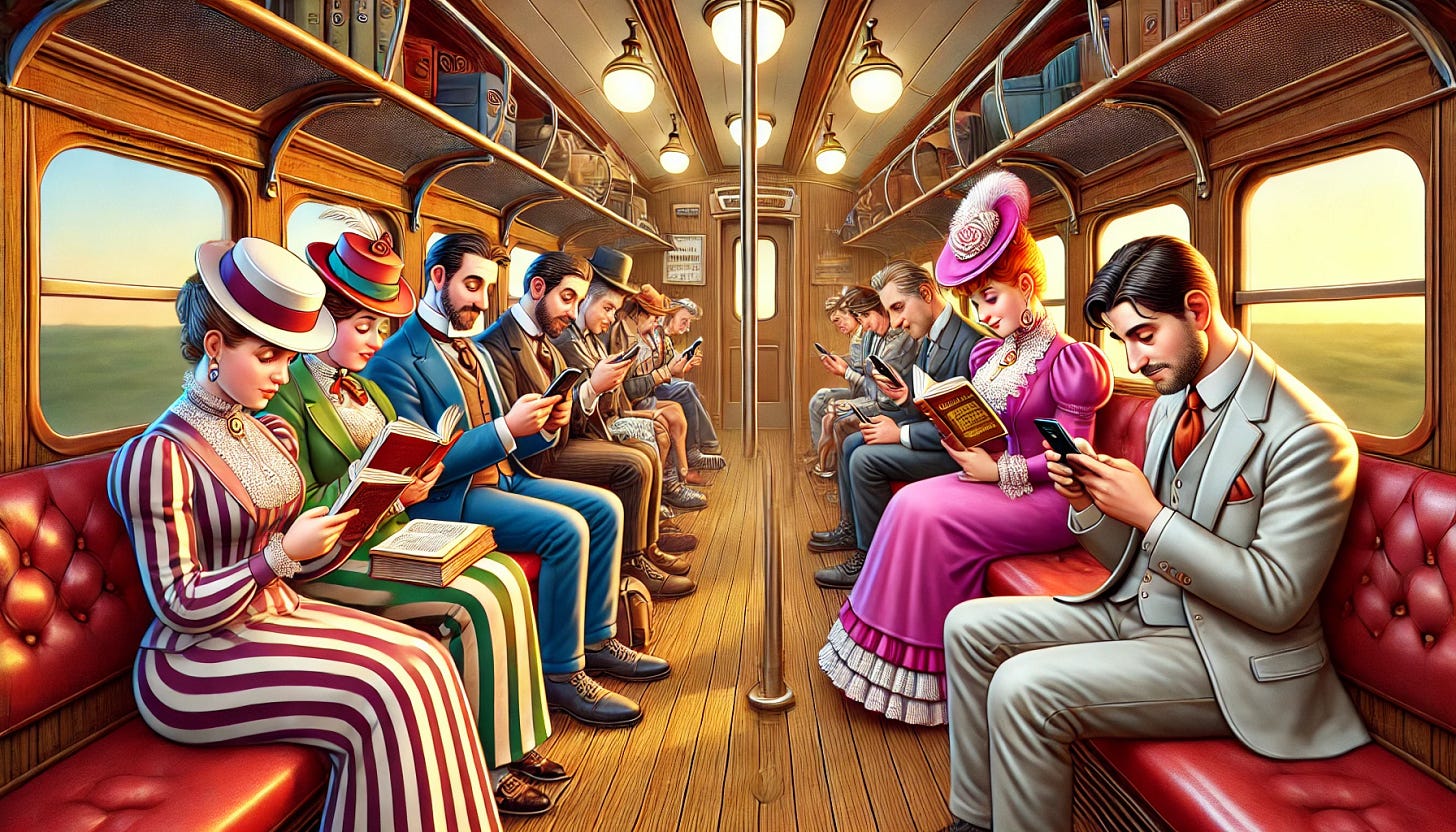From Platform to Platform: Railroad Fiction, the original TikTok
Before subway cars full of iPhone's came railcars full of novels
All Aboard: The Platform Revolution
In Victorian England, where steam engines transformed daily life, an unlikely media revolution took shape on railway platforms. By 1850, over 6,000 miles of track crisscrossed the nation, creating not just a transportation network but a vast audience of captive readers. This nineteenth-century phenomenon mirrors our current digital age, where mobile devices transform every commute into an opportunity for content consumption, and creators optimize for scrolling thumbs just as Victorian publishers once crafted stories for rail travel.
Full Steam Ahead: “Yellowback” novels and W.H. Smith
Publishers eagerly tapped into this burgeoning market with dedicated imprints like Longman's Traveller's Library, tailored for railway readers. Routledge's Railway Library alone published an astounding 1,277 titles over 50 years, capitalizing on a revolutionary retail innovation: bookstalls in train stations. W.H. Smith & Sons transformed the publishing industry by dominating railway bookstall distribution and influencing publishers' content strategies—a Victorian precursor to today’s digital platforms. Still a major player in British retail (FTSE 100: SMWH), the company’s legacy extends beyond distribution; it co-created the International Standard Book Number (ISBN) system in 1967, making book identification as essential to publishing as hashtags are to social media.
"Yellowback" novels, designed for rail travel—Victorian England’s equivalent of mobile-optimized content—began as illustrated hardbacks. Successful titles soon transitioned to affordable paperbacks, democratizing access to literature much like social media would later democratize content creation.
H.G. Wells captured the dominance of this new form of content, describing train carriages “uncomfortably full in the third class... everybody reading the current number either of the Daily Mail, Pearson’s Weekly, Answers, Tit-Bits, or whatever Greatest Novel of the Century happened to be going.”
The Express Line: From Sensation to Social Feeds
Victorian railway novels sparked the same controversy as today's viral content. Critics at The Times expressed outrage over sensational titles like Violet: Or, the Danseuse and Zingra, the Gypsy – nineteenth-century predecessors to modern bestsellers like Fifty Shades of Grey or A Court of Thorns and Roses. The strategy remains unchanged: give audiences engaging content they can easily pick up and put down, whether between Victorian train stops or modern subway stations.
Final Destination: The Cultural Impact
Railway novels transformed reading from a stationary activity into an integral part of travel culture, just as mobile devices have turned every commute into a content consumption moment. Whether it's a Victorian passenger absorbed in a scandalous yellowback or a modern commuter lost in social media, successful content adapts to how people move through their world. W.H. Smith's evolution from railway bookstalls to a modern retail giant demonstrates how companies that master new forms of content distribution can shape culture for generations.
Stay tuned.





Mark, Fascinating read. You’ve hit on an extraordinary example of technology creating a space in people’s lives that must be filled with “Something to do” and a recognition by an unrelated industry that it has a product that is cheap, portable and readily available. Technology provides the need and then
satisfies that need. Well done.